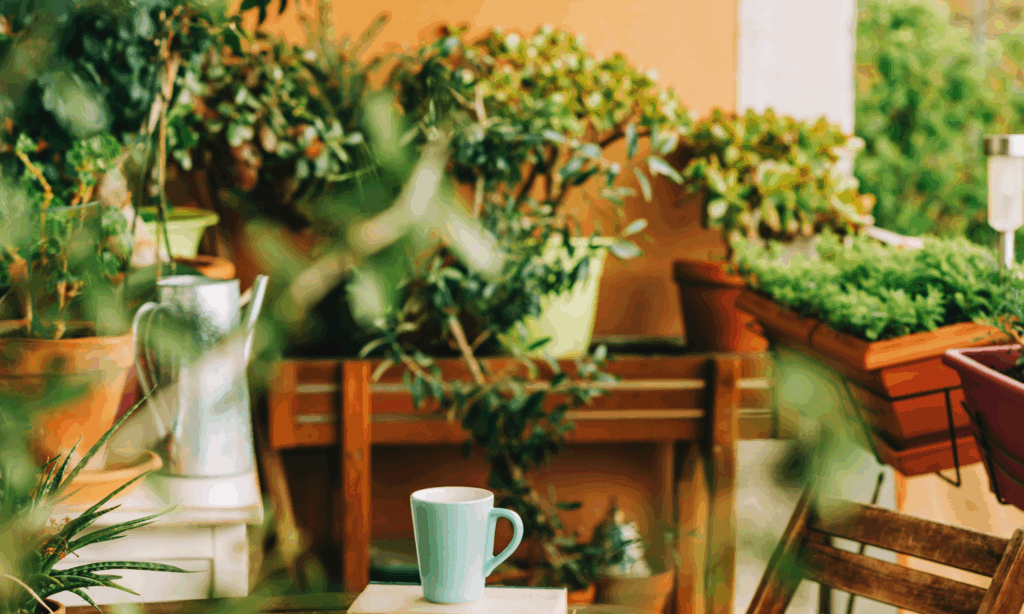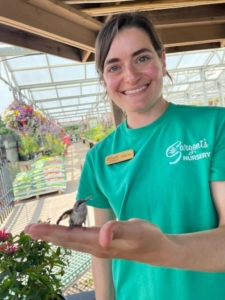As the nights grow cooler and the days grow shorter, we begin to prepare ourselves for the upcoming seasons. Now is the time to move indoor plants back inside after summer outdoors.

Many houseplants enjoy spending their summers outdoors. You may notice that your plant has doubled in size, grown babies, or maybe even bloomed—what a summer! It’s important to take the proper steps when transitioning your plants back to the indoor world. Most plants need time to adjust to a new environment. Similar to when you brought your plants outside in the spring, you’ll need to bring them in slowly. When temperatures start to dip below 50 degrees overnight, many houseplants are at risk of damage. Start the process of bringing them in well before that point to allow plenty of time for them to acclimate.
Bring your plants inside for just a few hours at a time to start, and gradually increase the time, letting the plants slowly adjust. Your plant is most likely used to getting much more sun than it will get inside, so place it next to your sunniest window. Once it’s inside for good, you can gradually reduce the sun exposure before putting it in its permanent winter spot. If you’re noticing yellow leaves or wilting, it’s most likely a sign of stress from making the move inside too quickly.
Make sure to inspect each plant thoroughly. Check for any insects on the leaves, paying close attention to the underside where aphids like to hide. Also, check the soil for signs of pests and wipe the containers off well. Mealybugs, aphids, spider mites, and other pests are less common when the plant is living outside, but they may still be present. The last thing you want is to bring any unwanted pests inside, putting the rest of your plants at risk! Systemic insecticides can be used as a preventative measure before bringing plants inside. This type of insecticide is absorbed through the roots and takes a little time to work, so it should be applied when the plant is still outside. It’s always a good idea to clean your plants with a microfiber cloth, our microfiber gloves, or neem oil plant wipes, before bringing them inside to make sure they are pest-free. If you find any unwanted guests and wiping them clean isn’t doing the trick, synthetic and organic sprays are available to help.

A banner summer for your outside houseplants can sometimes mean they have outgrown their container. It can also mean that they have become too big to bring inside. Now is the time to repot, prune, divide, and even propagate! When you’re repotting, remember to only upgrade to the next size pot, usually allowing an extra inch or so. Root growth will likely slow down over the winter, and too much soil plus too much water equals a soggy, sad plant. Houseplants typically need less water during the winter, but remember that running the heat causes the air inside our homes to dry out, reducing the humidity. Many houseplants benefit from humidifiers in the winter, especially tropical plants. We must remember our winters are dry, dark, and LONG—not necessarily houseplant-friendly!
Keep in mind that some houseplants go through a period of dormancy during the winter months. This can sometimes mean little to no growth or, in some cases, looking downright dead. A bit of research on each plant can help avoid any panic moments (i.e., “I killed it!”) and give you an idea of the plant’s individual winter needs.
Continue to check your plants regularly for pests and diseases that you may have missed during the moving process. A little extra effort now will help ensure happy and healthy plants through the winter. Once your plants are inside, cozy, warm, and clean, get ready to enjoy a winter full of increased oxygen and naturally purified air—some of the many benefits of houseplants!

She now travels the country, excitedly sharing her knowledge and gardening experiences with you. And hey, she even saved a hummingbird once with a sticky wing.
Check back for more from Alicia and come along for the ride!


